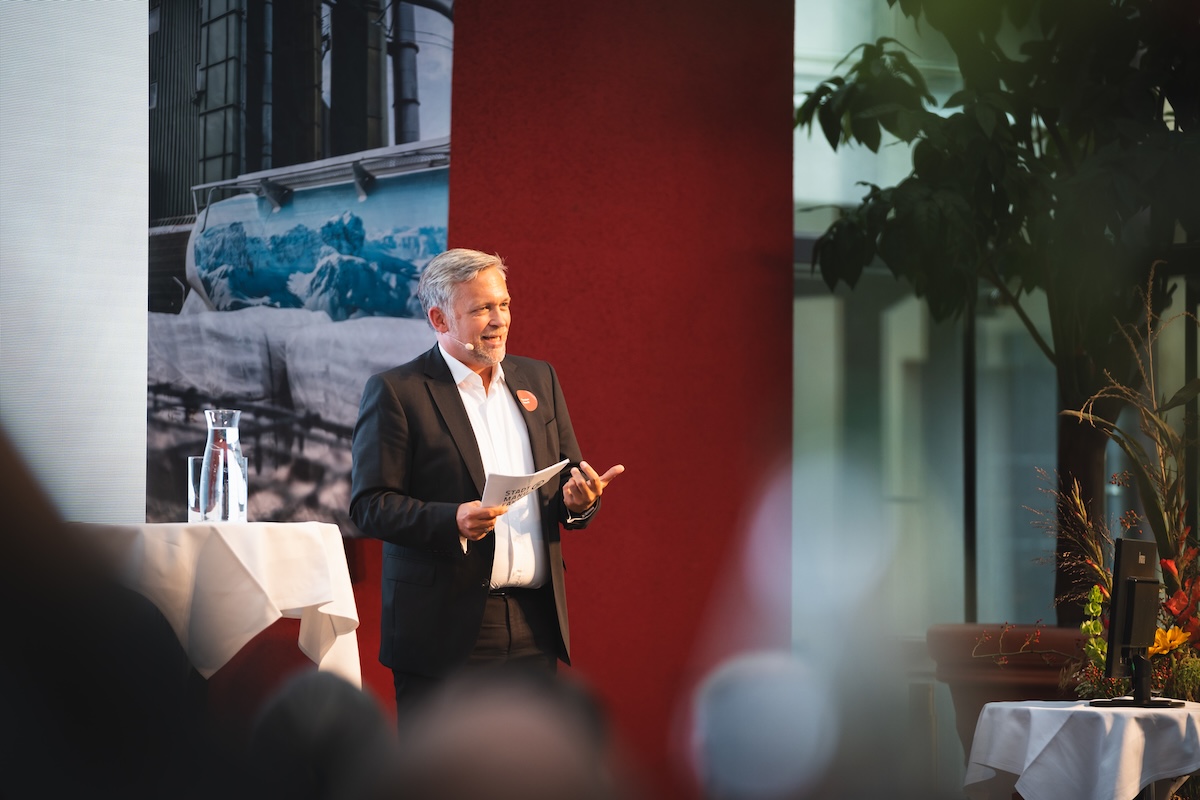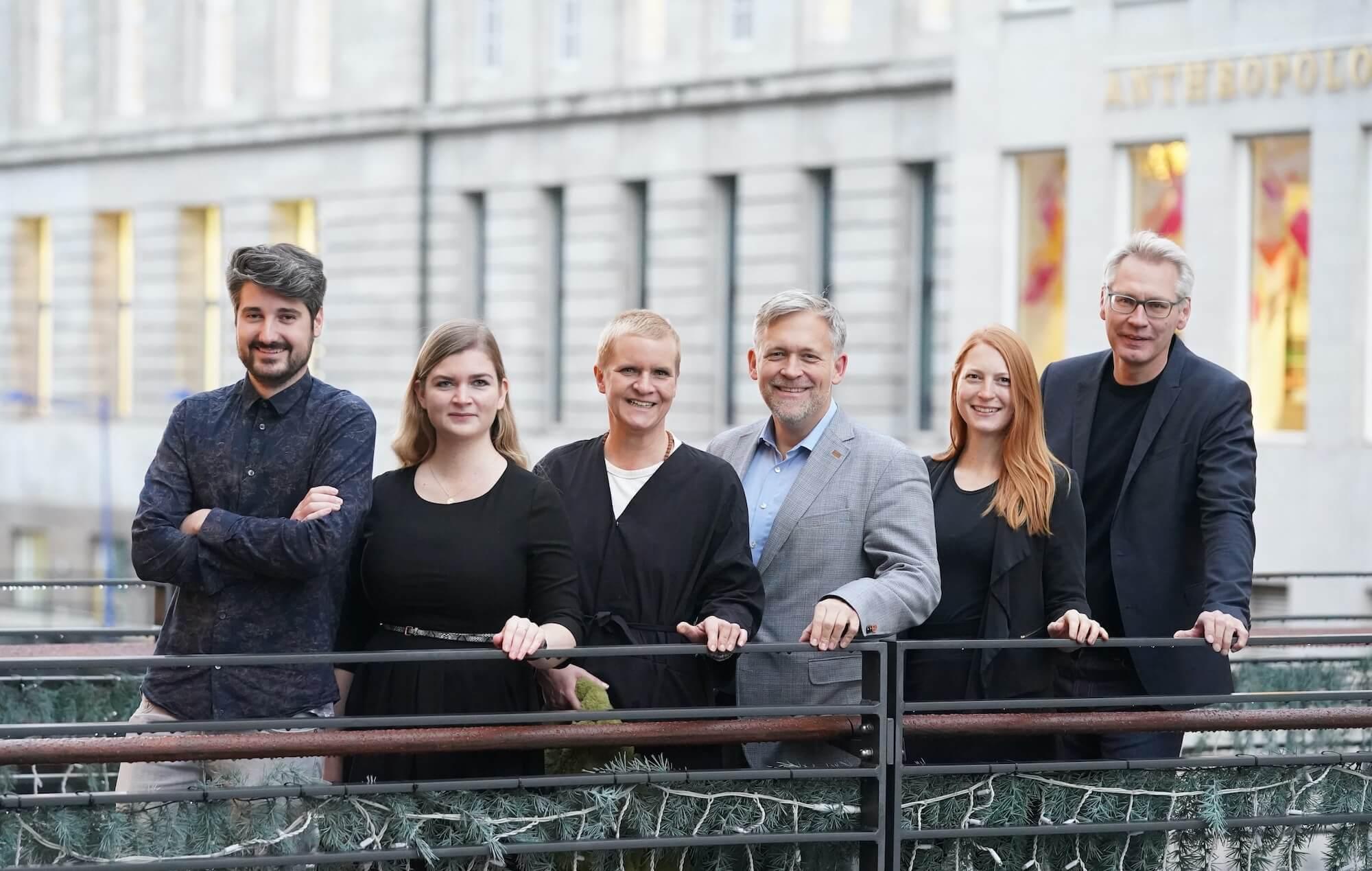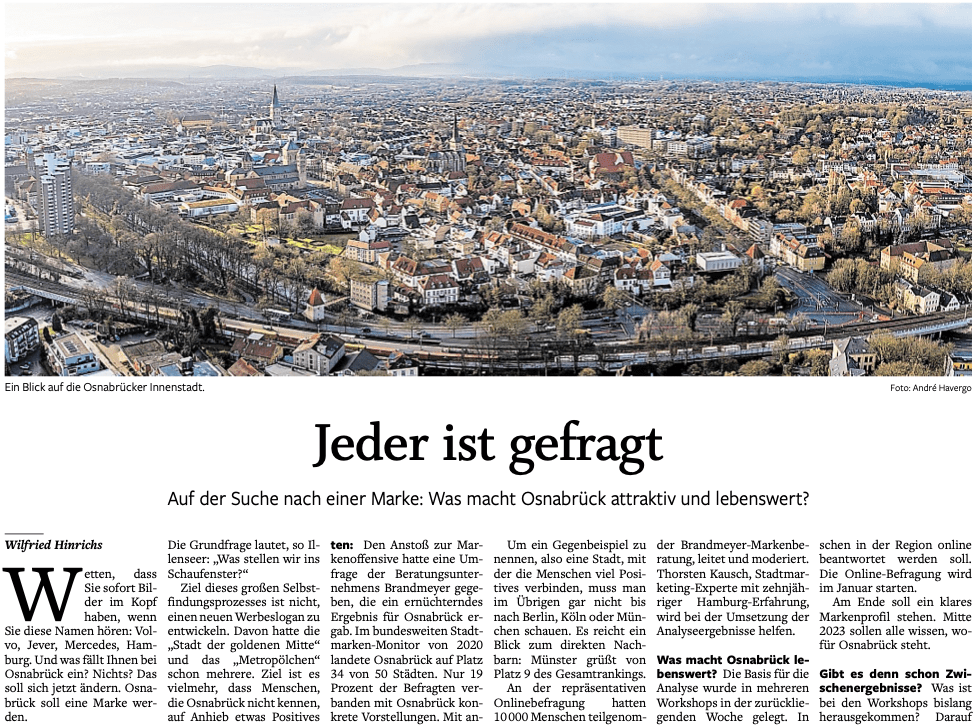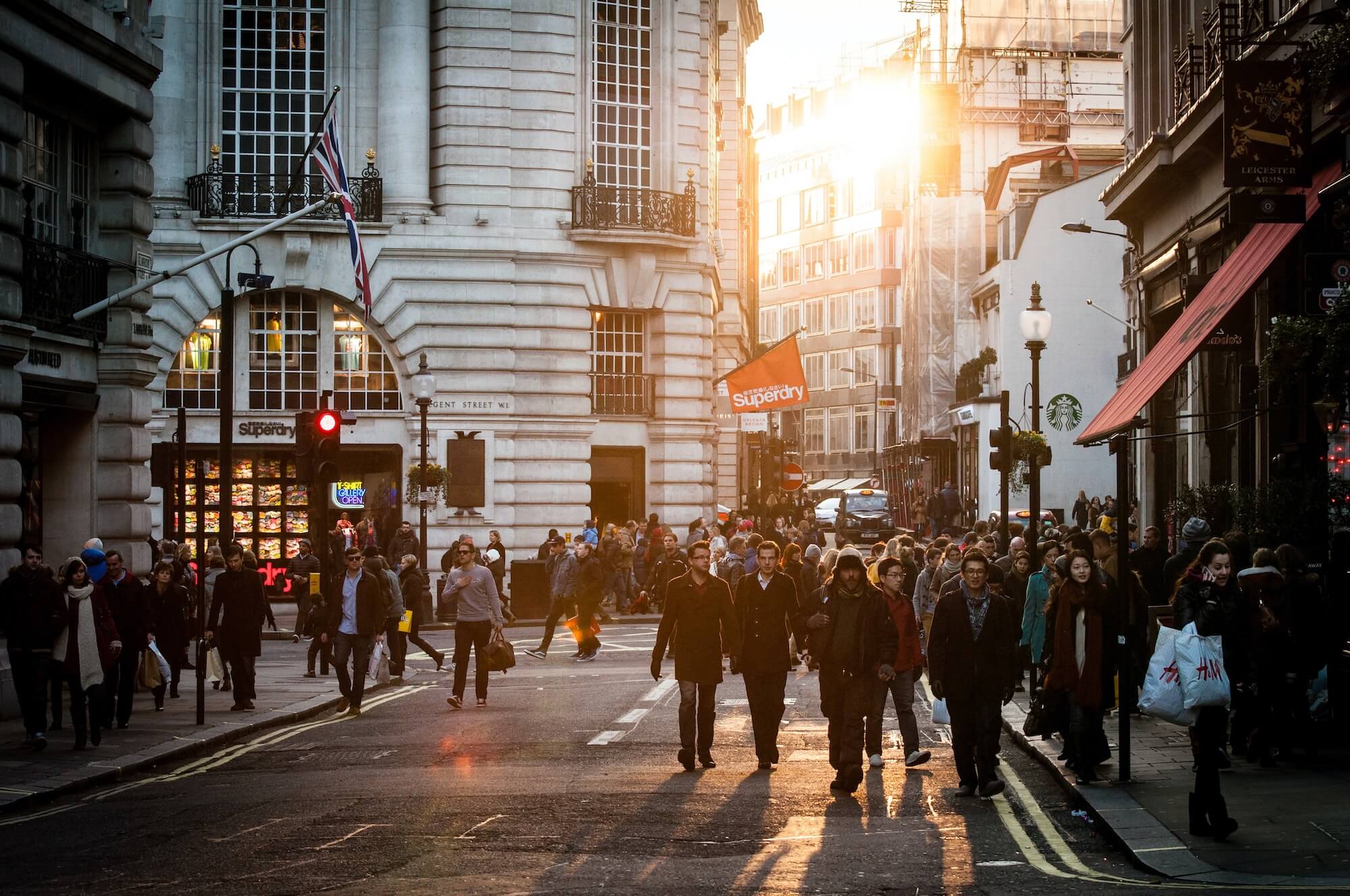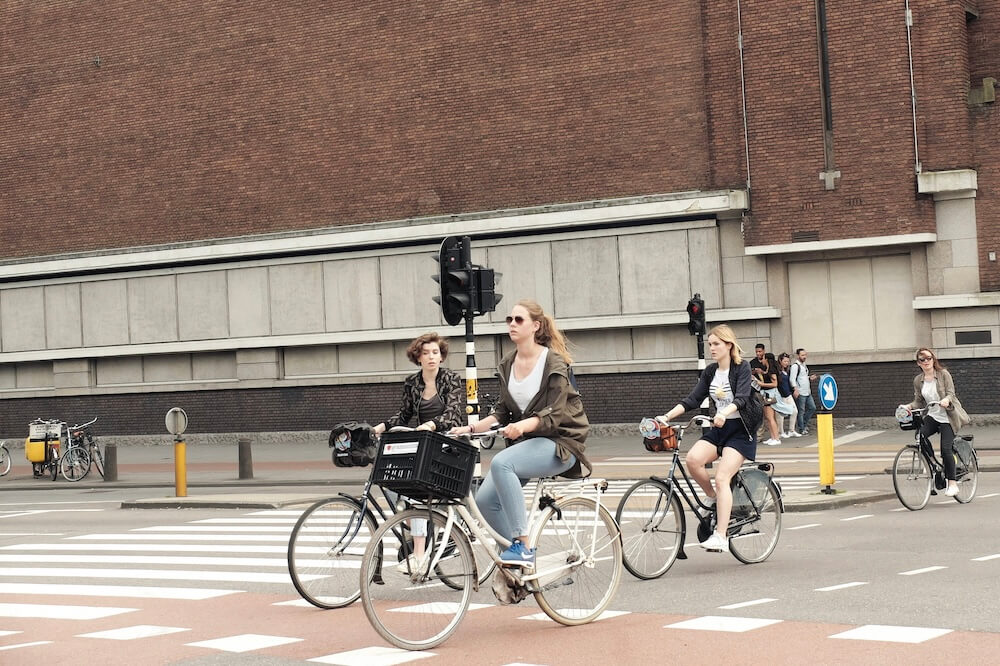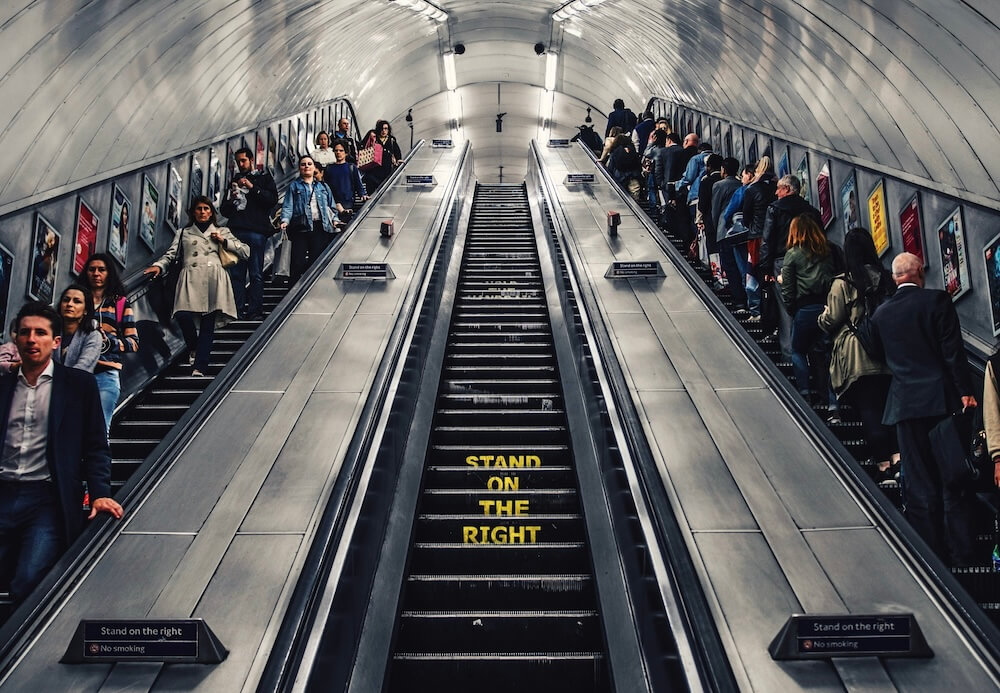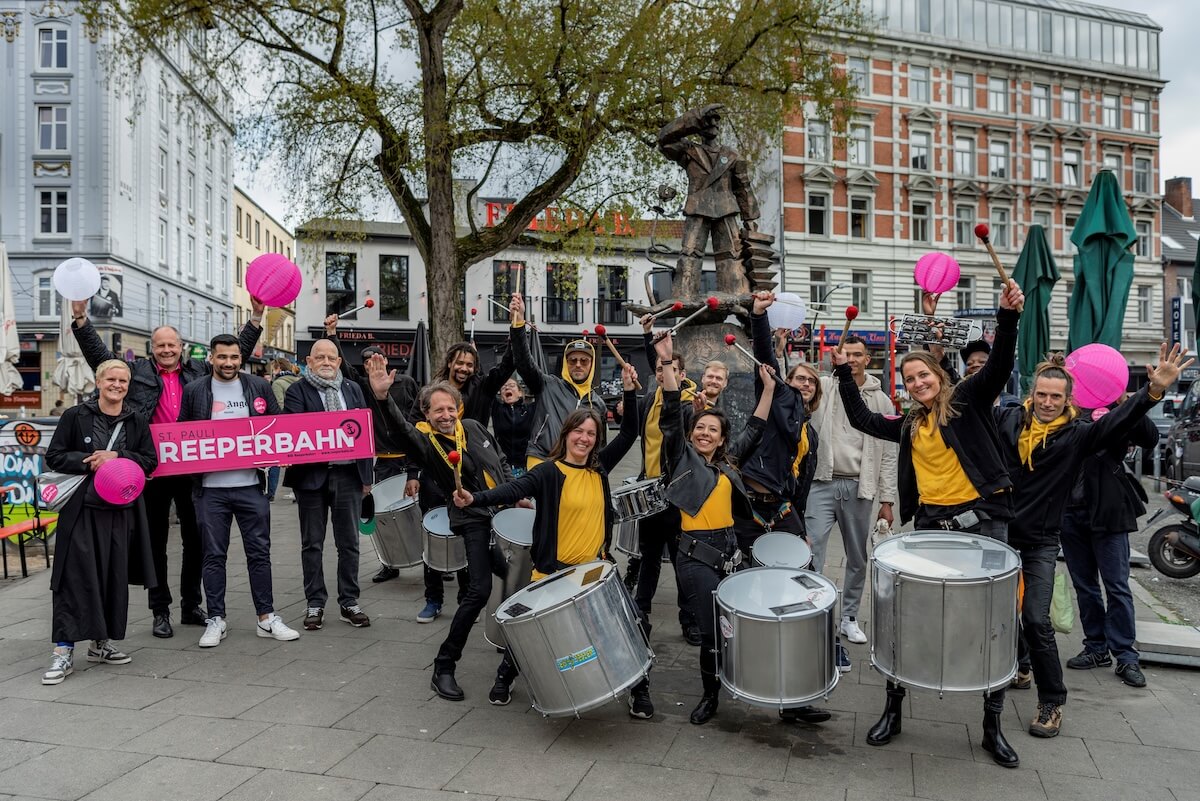
How does urban development work when the budget is empty?
Are collaborations such as BIDs a solution for the city of the future – especially with empty budgets and expiring funding programs? As a neighborhood manager, I am confronted with this question every day. My answer:
Yes – if you are prepared to rethink. When the city is no longer seen as a task for the administration alone, but as a joint project. Because in times of empty public coffers, it is all the more important to break new ground.
With its now 14 Business Improvement Districts (BIDs), Hamburg shows that public-private partnerships (PPPs) can be a very effective lever for advancing urban development. Not as a substitute for state responsibility – but as a partnership between the public sector, the real estate industry, tradespeople and neighborhood stakeholders.
Abstract:
Julia Staron is an expert in strategy development and neighborhood manager in Hamburg. She sheds light on the PPP model of Business Improvement Districts (BIDs) using the example of the BID Neuer Wall and the BID Reeperbahn+ in Hamburg. With an insider’s view and experience, Julia Staron shows why BIDs as PPP models are a key to resilient and attractive neighborhoods.
I personally work as a neighborhood manager in the BID Reeperbahn+ in the St. Pauli district, probably one of the most unusual, challenging – and inspiring! – neighborhoods in the city. But before I tell you about it, let’s take a quick look at the basic principle of a BID:
What is a Business Improvement District (BID)?
A Business Improvement District (BID) is a clearly defined business quarter in which owners and, as a rule, tradespeople join forces to actively shape their surroundings. The city makes this merger legally possible and provides organizational support. The measures of a BID are financed by the property owners – over a limited levy period of five years.
The aim of a BID is to sustainably improve the attractiveness, quality of life and competitiveness of the district – for example through measures relating to cleanliness, safety, marketing, infrastructure or events. The following applies: everything that is not part of the sovereign tasks can be the subject of BID measures.
Best practice from Hamburg: BID Neuer Wall and BID Reeperbahn+
BID Neuer Wall – elegancy, consistency and marketing strategy
Neuer Wall is considered the “queen of Hamburg’s shopping streets” – and is known far beyond the city limits. Here you can see what a BID can achieve when ambition, design and economic power come together. In addition to a high-quality appearance – paving, street furniture, lighting concept, greenery – the Neuer Wall BID focuses on stringent branding: events such as the “Hüttenzauber Neuer Wall”, the summer gardens or seasonal art installations create recognition.
At the same time, a lot is being done behind the scenes: A strong location community (made up of tradespeople, landowners and working groups) meets regularly to avoid vacancies, coordinate tenant strategies, exchange ideas with the administration and develop new services for customers. A lot is invested – not only financially, but also emotionally and strategically.
“The Neuer Wall BID in Hamburg’s city center is a real BID success model.”
BID Reeperbahn+ – Diversity, conflicts and identity
The clocks tick differently in St. Pauli. Here in the Reeperbahn+ BID, we work with a much broader range of topics – and with an enormous diversity of stakeholders. Red light and rock music, tourism and theater, residents and retail – worlds collide on the Reeperbahn. This makes it all the more important to have reliable neighbourhood management that mediates, moderates, organizes and makes things possible that would otherwise often fail due to responsibilities or prejudices.
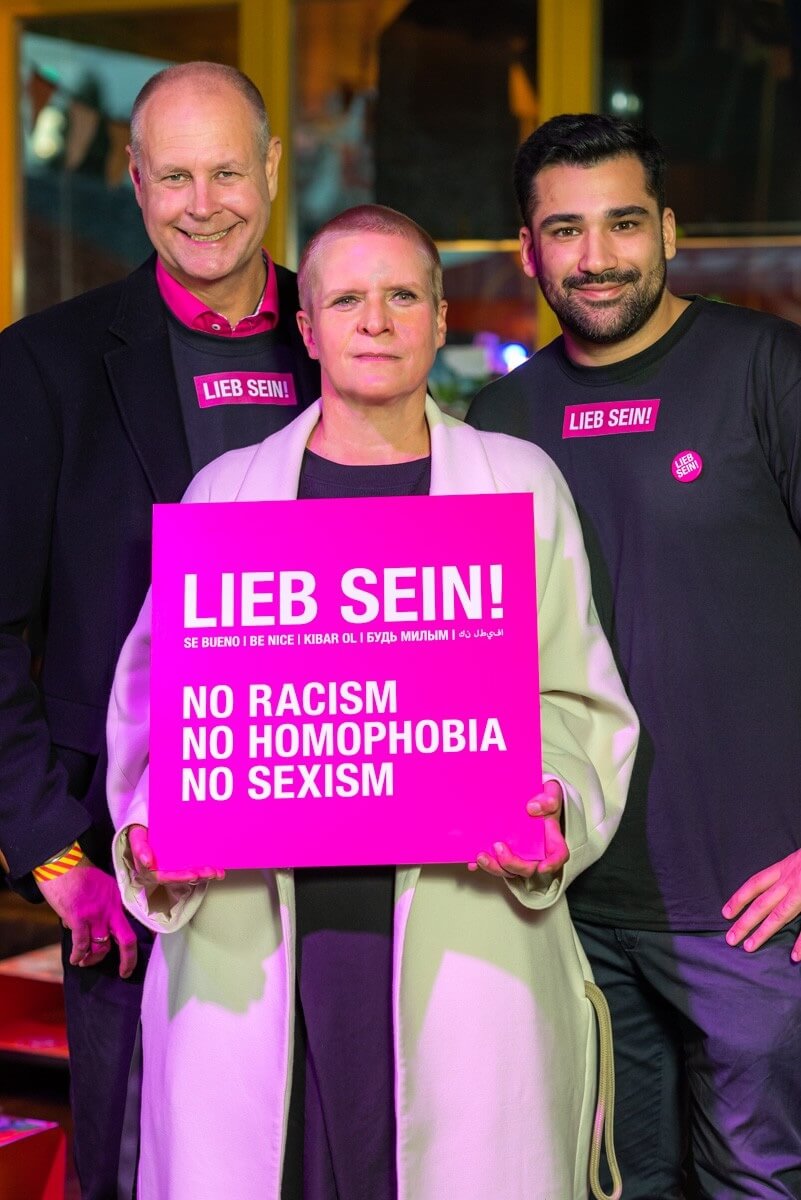
Julia Staron (center) from the Reeperbahn+ BID promotes the “Lieb sein!” campaign in Hamburg’s St. Pauli district. At her side: neighborhood manager Lars Schütze (left) and Philip Peemüller, project manager at BID contractor Otto Wulff Placemaking (right)
Specifically, we have, among other things …
- The ArtWalk not only brings art into the public space, but can also tell the stories behind the history through the individual artistically interpreted personalities and thus bring the special features of St. Pauli closer to guests and residents,
- introduced its own cleaning routes that specifically address “problem areas”,
- conceived, co-designed or accompanied many event formats that make the cultural diversity of the neighborhood visible (e.g. “St. Pauli blüht auf”, “100 Jahre Herbertstraße”),
- tourist signposting developed with the help of the Scoutello app,
- “Round tables” on the subject of security were held together with tradespeople and the police,
- has created a tool for service and exchange with the “Reeperbahnrunde” format,
- with the “Lieb sein!” campaign strengthened cohesion in the neighborhood and sent a clear message to the world: St. Pauli is colorful! Respect that!
None of this would be possible without the BID instrument – at least not with this level of commitment and structure.
All BIDs in Hamburg (as of 2024)
There are currently a total of 14 BIDs in Hamburg. They show the diversity of the instrument – from luxury miles to neighborhoods:
- BID Neuer Wall
- BID Reeperbahn+
- BID Opernboulevard
- BID Quartier Gänsemarkt
- BID Hohe Bleichen / Heuberg
- Mönckebergstrasse BID
- BID Nikolai-Quartier
- BID Bergedorf City
- BID Langenhorn Market
- BID Wandsbek Market
- BID Osterstraße
- BID Alstertal shopping center
- BID Harburg city centre
- BID Grindelviertel
Each of these BIDs has its own history, its own challenges – and has often found very creative answers to them. You can find out more about Business Improvement Districts in Hamburg here at hamburg.de.
Why BIDs have a future
Cooperation is not a nice extra. It is essential. After all, the complex challenges of our time – climate adaptation, social balance, digitalization, mixed use, desertification of city centres – can no longer be solved with rigid responsibilities or individual measures.
BIDs create a playing field on which a wide variety of stakeholders can work together – strategically, bindingly and with a clear goal: more quality of life and sustainability for our neighborhoods. They offer structure, resources, communication – and not least a sense of responsibility for the local area.
“Cooperation is not a ‘nice to have’, but an essential success factor. This is exactly where PPP models such as Business Improvement Districts come in: They offer structures and resources – as well as the opportunity to shape the city together.”
My conclusion
If we want to invest in the future of our cities, we need new forms of cooperation. BIDs are a successful example of this. They rely on partnership instead of going it alone. And they show: A lot can be achieved even with a small public budget – if many people get involved.
Image credit: BID Reeperbahn+

Julia Staron
is project manager at Stadtmanufaktur, artist and neighbourhood manager in the BID Reeperbahn in Hamburg
